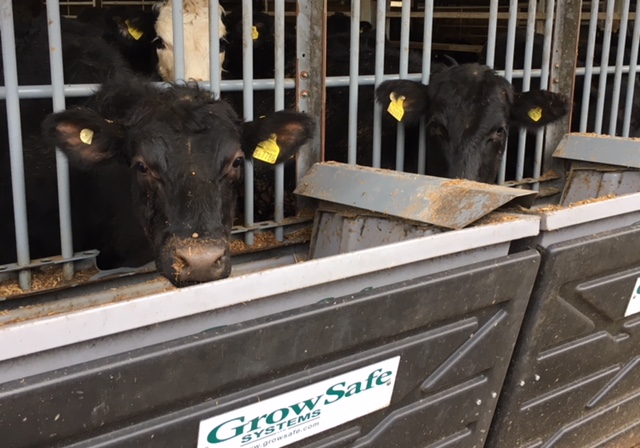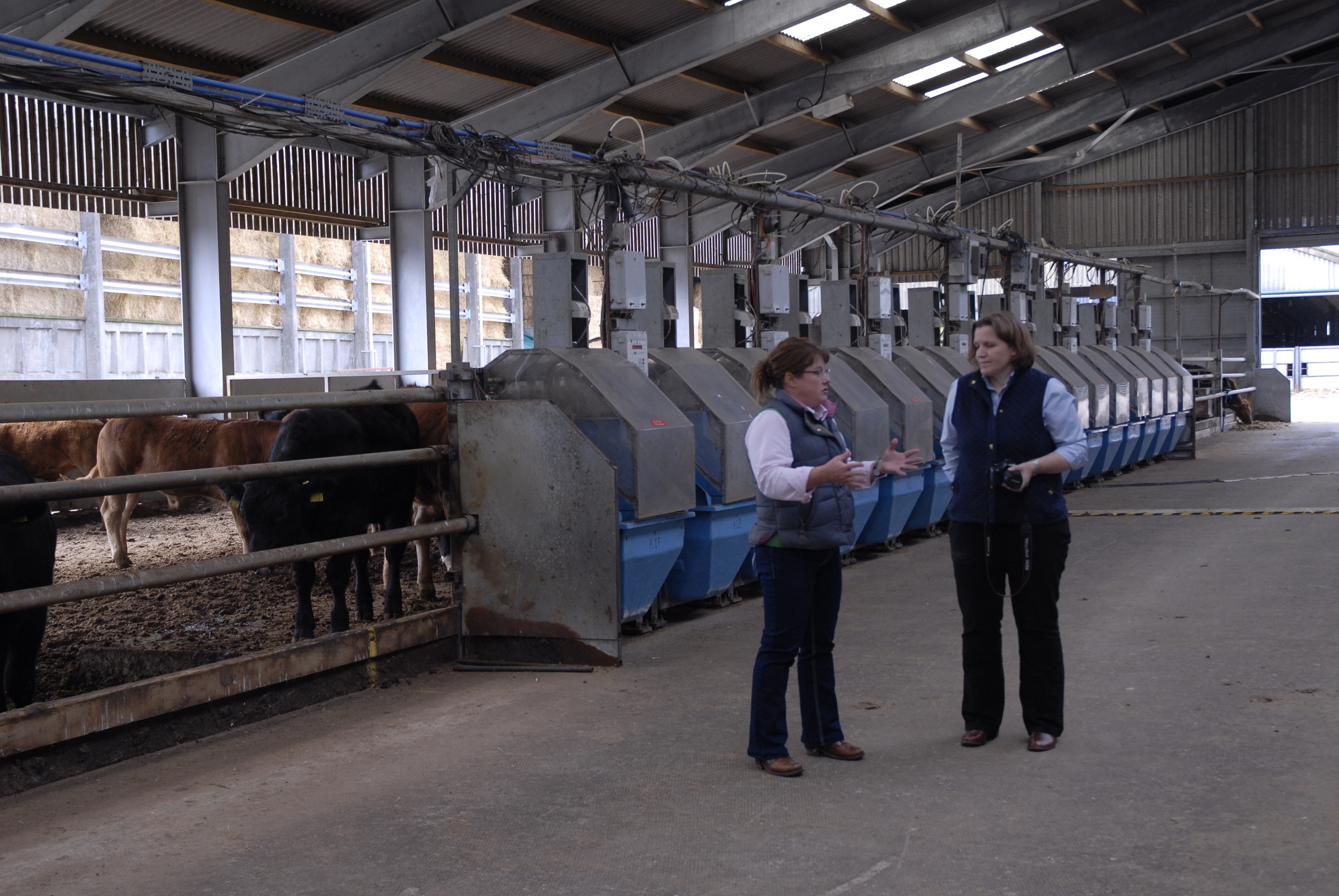- Home
- Beef feed efficiency programme
Beef feed efficiency programme
Sector: Beef & Lamb
Project code: 61100002 / 61100034
Dates: Phase 1: 01 January 2015 - 31 December 2018 / Phase 2: 01 January 2020 - 31 December 2022
Project leader: AHDB
Other Contractors: Scottish Rural University College

The project is in the second phase of feed intake recording work. This phase aims to record an additional 750 feed intake records along with 1500 meat quality sampels. Meat quality analysis will support the feed efficiency analysis. The second phase will also produce EBV and GEBVs for UK beef animals to enable genetic selection for increased feed efficiency. Animals with higher feed efficiency eat less while maintaining performance levels, thus reducing their GHG emissions.
The Phase 1 project reports are available below:
To discuss opportunities for use, please email Kim Matthews.
Read the latest Beef Feed Efficiency research on how the project delivers cost savings for the farmers as well and reducing the environmental impact.
The Problem:
A Defra funded scoping study (IF0207) showed that selection of purebred beef cattle using the currently available selection index tools will deliver a substantial positive impact on the economic and environmental sustainability of beef cattle production in the UK.
Genetic improvement plays an important role in developing ruminant systems that will be sustainable in the future, and produce food in an environmentally-friendly manner. Also, genetic improvement of livestock is a particularly cost-effective technology, producing permanent and cumulative changes in performance.
Recording feed intake in order to include a measure of resource use efficiency into existing selection indices, is expected to increase the realised benefits in farm level profit by around 39% and in GHG reduction by around 22%. There is evidence of genetic variation in the efficiency with cattle convert the resources within a system into animal product. There is a need to understand what variation exists between genotypes within breeds in the efficiency with which animals utilize nutrients and how efficiency traits can best be incorporated into breeding programmes.
.jpg)
Aims and Objectives:
- To establish a consortium of stakeholders in the UK beef industry, including academia and governments, and complete the scoping and design of the project
- To undertake on-farm animal-based studies to devise, test and validate selection and breeding objectives for feed efficiency
- To develop protocols for recording data necessary for selection for feed efficiency at a national scale
- To establish a network for national feed intake recording
- To undertake genetic analysis and determine selection criteria using data collected
- To establish appropriate business model to ensure an on-going national programme of feed intake recording

Approach:
The main elements of the project will be:
- Agreeing industry-wide protocols for measuring feed efficiency, and taking and storing tissue samples for potential future genomic analysis
- Defining a “blueprint for feed efficiency recording facilities on commercial farms
- Installation of facilities (up to 72 individual feeders) for measuring feed efficiency on commercial finishing units
- Collection of data on around 1800 cattle during the project
- Determination of genetic parameters for efficiency traits in one breed. This is the basic analysis required for the inclusion of the efficiency traits in breeding programmes
- Establishing a network for national feed intake recording
- Developing a set of possible business models for the continued recording of feed efficiency after the project period
PROJECT UPDATES
BFEP Project Consortium Update – October 2018
BFEP Project Presentation – July 2018
BFEP Project Update – June 2018
BFEP Project Update – April 2018
BFEP Project Update – Oct 2018
BFEP Project Update – Nov 2019
BFEP Project Update – March 2020
OPEN DAYS
- Breed Society Open Day Update – December 2017
- BFEP Breed Society Open Day Presentation by Kim Matthews and Natalie Cormack – December 2017
- BFEP Breed Society Open Days Presentation by Duncan Pullar – December 2017

